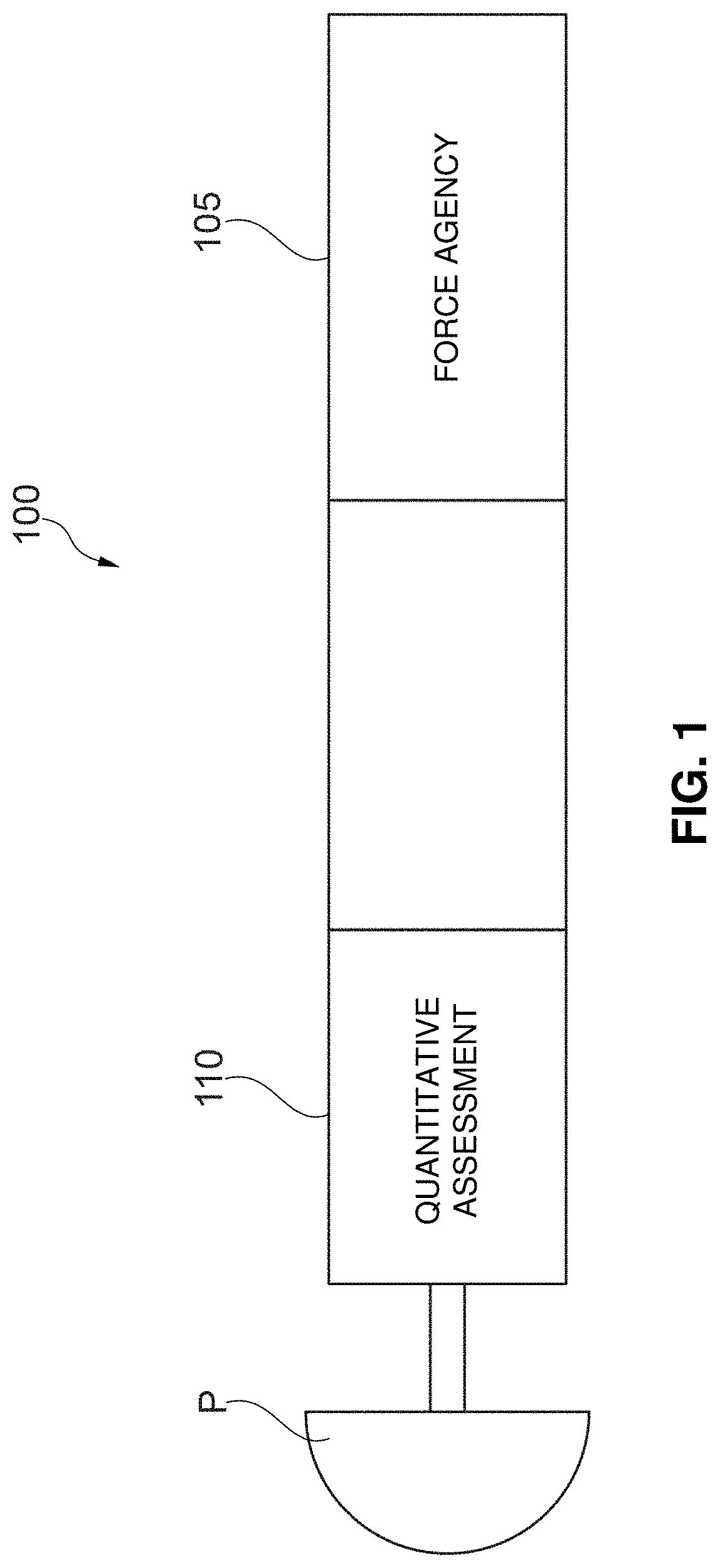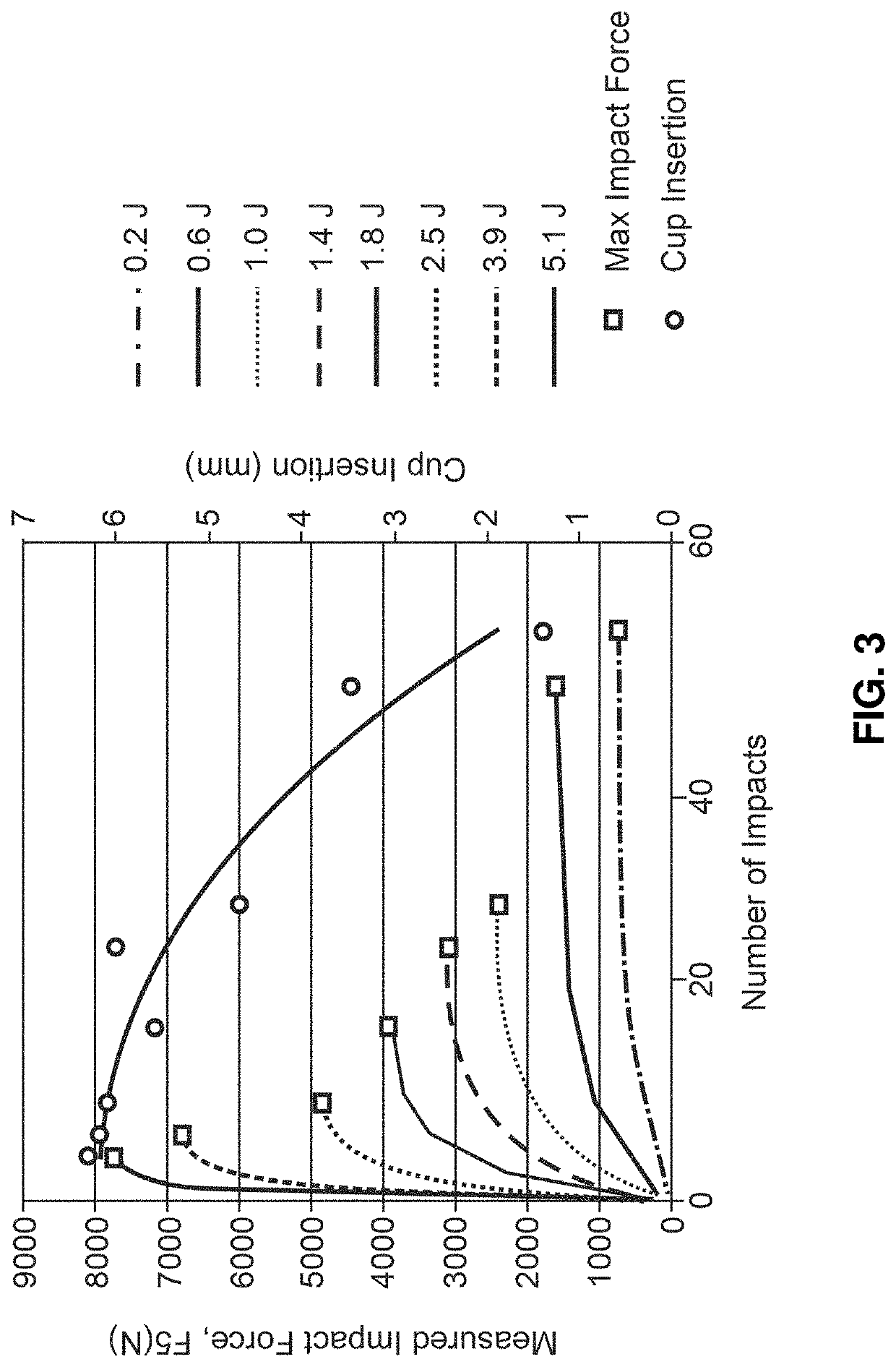Patients of surgeons who do not perform as many procedures can have increased risks of complications, particularly of complications arising from incorrect placement and positioning of the acetabular component.
The incorrect placement and positioning may arise even when the surgeon understood and intended the acetabular component to be inserted and positioned correctly.
This is true because in some techniques, the tools for actually installing the acetabular component are crude and provide an imprecise, unpredictable coarse positioning outcome.
However the resulting location and orientation of the acetabular component after the adjustment may not be, in fact, the desired location and / or orientation.
In some circumstances, quite large impacting forces are applied to the prosthesis by the mallet striking the rod; these forces make fine tuning difficult at best and there is risk of fracturing and / or shattering the acetabulum during these impacting steps.
Even though hip replacement surgery has been one of the most successful operations, it continues to be plagued with a problem of inconsistent acetabular cup placement.
Cup mal-positioning is the single greatest cause of hip instability, a major factor in polyethylene wear, osteolysis, impingement, component loosening and the need for hip revision surgery.
These incorporated patents explain that the process of cup implantation with a mallet is highly unreliable and a significant cause of this inconsistency.
The patents note two specific problems associated with the use of the mallet.
First is the fact that the surgeon is unable to consistently hit on the center point of the impaction plate, which causes undesirable torques and moment arms, leading to mal-alignment of the cup.
Second, is the fact that the amount of force utilized in this process is non-standardized.
Traditionally these methods do not have any clear understanding of the forces, including magnitude and direction, involved in installing a prosthesis.
Consequently, the surgeon is left somewhat haphazardly and variably relying on two different fixation methods (e.g., pins and press-fit) without knowing how or why.
These problems include i) undesirable and unpredictable torques and moment arms that are related to the primitive method currently used by surgeons, which involves manually banging the mallet on an impaction plate mated to the prosthesis and ii) non-standardized and essentially uncontrolled and unquantized amounts of force utilized in these processes.
However, as has been previously described in the incorporated applications, it continues to be plagued with the problem of inconsistent acetabular cup placement.
Cup mal-positioning is a significant cause of hip instability, a major factor in polyethylene wear, osteolysis, impingement, component loosening, and the need for hip revision surgery.
These systems may provide a set of periodic snapshots in time over the course of the procedure, but they do not provide true realtime continuous data over the installation procedure.
But these systems do not provide an orientation measurement (and in most cases no measurement of any information) during the strike.
The actual system does not provide realtime measurement during the actual insertion event.
In the incorporated applications, alternatives to the manual swinging of the mallet are described and in these systems the conventional measurement paradigm may be unnecessarily restrictive.
However, it has been difficult to assess a primary implant stability due to complex nature of bone-implant interface, or to evaluate an optimal press fit fixation.
There is no quantitative method in current clinical practice to assess the primary stability of the implant, with surgeons relying solely on their qualitative proprioceptive senses (tactile, auditory, and visual) to determine point of optimal press fit fixation.
Four factors associated with difficulty obtaining optimal press fit fixation: i) no current method exists to gauge the resulting stress field in bone during the impaction of an oversized implant; ii) the material properties of bone (bone density) vary significantly based on age and sex of the patient, and are unknown to the surgeon; iii) current mallet based techniques for impaction do not allow surgeons to control (quantify and increment) the magnitude of force using in installation; and iv) surgeons are charged with the difficult task of: a) applying and modulating magnitude of force; b) deciding when to stop application of force; and c) assessing a quality of press fit fixation all simultaneously in their “mind's eye” during the process of impaction.
Aseptic loosening of press fit THR components is one of the most common causes of failure at 50% to 90% and closely associated with insufficient initial fixation.
Inadequate stabilization may lead to late presentation of aseptic loosening due to formation of fibrous tissue and over stuffing the prosthesis may lead to occult and / or frank peri-prosthetic fractures.
The cost of poor initial press fit fixation resulting from (loosening, occult fractures, subsidence, fretting, metallosis, and infections) maybe under reported however estimated to be in tens of billions of dollars.
The limitations of this procedure produce frustration and anxiety for surgeons, physical and emotional pain for patients, at great costs to society.
Initial implant fixation can be measured by pullout, lever out, and torsional test in vitro; however, these methods have minimal utility in a clinical setting in that they are destructive.
Vibration analysis, where secure and loose implants can be distinguished by the differing frequency responses of the implant bone interface, has been successfully employed in evaluating fixation of dental implants however, this technology has not been easily transferable to THR surgery, and currently has no clinical utility.
In clinical practice, surgeons err on the side of not overstuffing the prosthesis which leads to a smaller under ream (or line to line ream) and screw fixation with attendant risks.
Finally, several visual tracking methods (Computer Navigation, Fluoroscopy, MAKO Robotics) are utilized to assess the depth of cup insertion during impaction in order to guide application of force; however, these techniques, from and engineering perspective, are considered to be open loop, where the feedback response to the surgeon is not a force (sensory) response, and therefore does not provide any information about the stress response of the cavity.
A healing potential of a ruptured ACL has been poor, and reconstruction of the ACL is often required for return to activity and sports.
 Login to View More
Login to View More  Login to View More
Login to View More 


